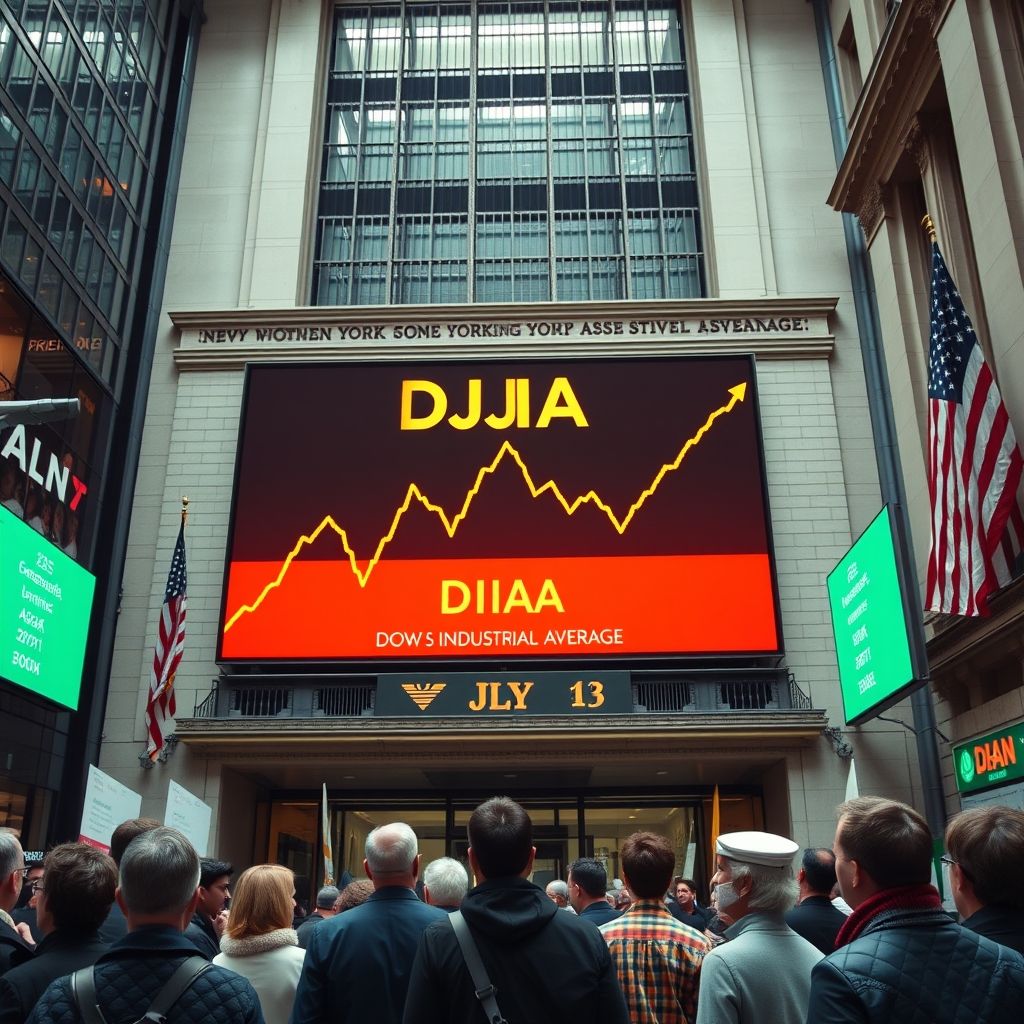Decoding the Dow: A Deep Dive into the Dow Jones Industrial Average

Understanding the Dow Jones: More Than Just a Number
The Dow Jones Industrial Average (DJIA), a name synonymous with the American stock market, is much more than just a collection of numbers. It’s a barometer of the U.S. economy, a reflection of market sentiment, and a crucial benchmark for investors worldwide. Understanding the Dow requires a grasp of its history, its composition, and the forces that influence its daily fluctuations.
A Brief History and Composition
The Dow Jones, perhaps the most well-known share index in the USA, traces its roots back to 1896 when it comprised just 12 leading companies. Today, it’s a price-weighted index consisting of 30 of the most prominent and influential publicly held companies in the United States. Unlike some other indices, the Dow is price-weighted, meaning that companies with higher stock prices have a greater impact on the index’s movement. Dividends paid by the companies within the index are not factored into its calculation.
How the Dow is Determined
The composition of the Dow Jones is not set in stone; it evolves over time to reflect changes in the U.S. economy and corporate landscape. This evolution is overseen by an independent commission within The Wall Street Journal. Unlike some indices with fixed review schedules, the commission makes changes as needed, ensuring the index remains relevant and representative of the overall market. This can involve replacing companies, a process that’s often carefully considered to minimize disruption and maintain the index’s integrity.
Trading Hours and the Global Impact
The Dow Jones Industrial Average trades on Wall Street, and its regular trading hours are from 9:30 AM to 4:00 PM Eastern Time (equivalent to 3:30 PM to 10:00 PM CET). The movement of the Dow, however, extends far beyond those specific hours. Global events, economic news, and investor sentiment from around the world can influence its performance. Keeping an eye on the Dow is therefore essential for anyone involved in the world of investments, regardless of location.
Market Sentiment and Broader Trends
The market is constantly reacting to a variety of factors. Current discussions include broader market sentiment and investment strategies. Geopolitical events play a role, too. For example, the potential closure of the Strait of Hormuz by Iran could send ripples throughout the market, causing investors to reassess their positions and perhaps shift towards more conservative investments. Similarly, shifts in investor behavior are noteworthy. There is a rising trend of risk awareness among women, influencing their investment decisions. Finally, the performance of investment baskets, like Goldman Sachs’ Sharpe Ratio basket, is constantly tracked.
Expert Perspectives: Bearish Outlooks
Financial analysts and strategists offer diverse perspectives on the market. One such commentator is Peter Berezin, who, as of the time of writing, maintains a bearish outlook on both the stock market and the economy. Such perspectives highlight the importance of diverse analysis when creating an informed investment strategy.
Investment Strategies and the Dow
Investing in the Dow Jones can take various forms, from directly purchasing shares of the companies included in the index to utilizing Exchange Traded Funds (ETFs) that track its performance. Understanding the index’s composition, its price-weighted nature, and the factors that influence its movements are critical to making informed investment decisions.
In Conclusion
The Dow Jones Industrial Average is a complex and fascinating indicator of the American economy. By understanding its history, composition, and the influences shaping its daily activity, investors can gain valuable insights into the broader market and make more informed decisions. Whether you’re a seasoned investor or just starting, staying informed about the Dow Jones is a key part of staying informed about the market.




